Pictures of the Month
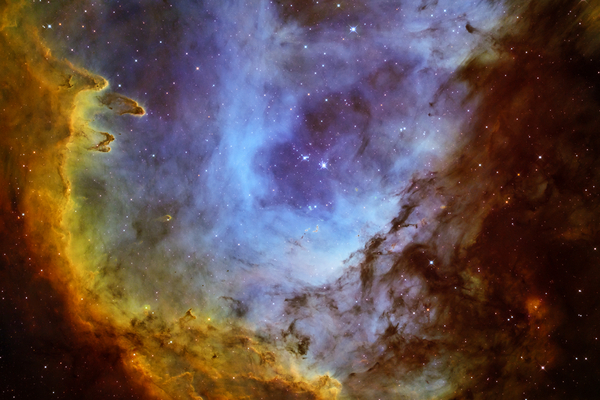
Bok globules in IC1848
Bence Tóth
2022 December
The embryo-shaped nebula, well-known to astrophotographers, is located in the Milky Way, in its Perseus arm, 7,500 light-years away from the Solar System. Home to many nascent and young stars as most large galactic HII zones in the Milky Way. It can be easily observed from Hungary in autumn and winter in the constellation Cassiopeia.

A mysterious solar eclipse
Rafael Schmall
2022 November
Our country is small, and therefore we can experience one total solar eclipse in a century on average, however, partial solar eclipses are usually visible from our country every few years. This is what happened on October 25, 2022, when an eclipse covering nearly half of the Sun's disk could be observed. Counter to the extremely fortunate and memorable total solar eclipse on August 11, 1999, when not only the celestial phenomenon but also the weather was unusually kind to us and the weather was clear throughout the country, this October was almost completely cloud-covered, and the waning sun could be glimpsed only for moments.
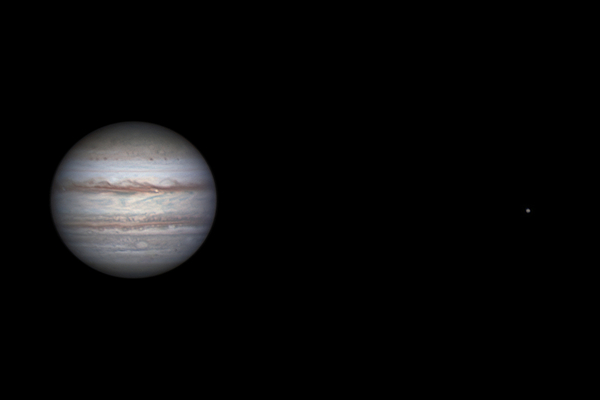
Jupiter and Io
Dr. László Francsics
2022 October
The first planetary image of the Sülysáp Half-Meter Community Astrograph with the collaboration of Gábor Tóth and László Francsics
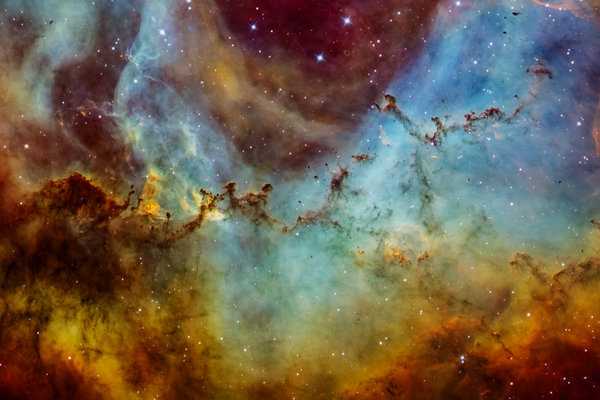
The Rosette Nebula in narrowband
Péter Feltóti
2022 September
The Rosette Nebula in narrowband taken by Péter Feltóti. Astrophoto of the month September.
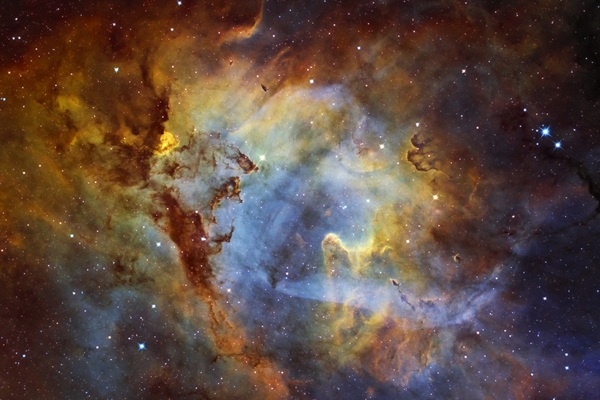
Tangle of colors in Cepheus
Bence Tóth
2022 August
The image shows a detail of the Sh2-132 nebula, which is located in the Cepheus constellation in the Milky Way, casting over our heads during summer and autumn nights. Also nicknamed the Lion Nebula, the faint luminous gas cloud is not very significant among similar objects, such as the famous Great Orion Nebula or the Rosette Nebula. Photographers are only now beginning to discover this otherwise heavily star-obscured area, and thanks to advanced techniques, the beauty of this lesser-known world is increasingly being revealed.
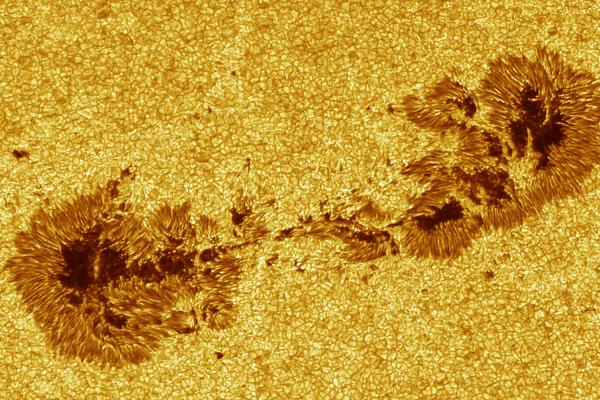
Fireflowers - The AR13055 bipolar sunspot
Dr. László Francsics
2022 July
With the progress of the current 25th solar cycle, more and more complex sunspots appear on the photosphere, the visible surface of our central star, the Sun. The appearance of these sunspots is completely normal, it is in accordance with the solar activity. The Italian astronomer Galileo Galilei noticed spots on the Sun as early as in 1610 during his first telescope observations. It was later discovered that these spots change, appear and disappear, linked to the 11-year cycle of the Sun. One of the largest sunspots of the current cycle was numbered AR13055, which was also the most regular bipolar sunspot in this cycle until now. Its symmetry is also real, as the polarities of the opposite sides of the sunspot group are also opposite. This phenomenon can also be clearly seen in the recording of the magnetometer of the Solar Dynamics Observatory orbiting in space. Blue represents the one, red the other magnetic pole.

Messier 13
Lionel Majzik
2022 June
The shortness of the summer nights does not favor astrophotographers, to say the least. It can often take years to collect the amount of photons required to be able to aesthetically process a fainter summer deep-sky object. I tried to avoid this obstacle by not choosing a faint nebula, but the brightest globular cluster that can be observed from Hungary. The raw material for the published image was collected from Tápióbicske in Pest County in over six nights between July 7- August 14, 2021.
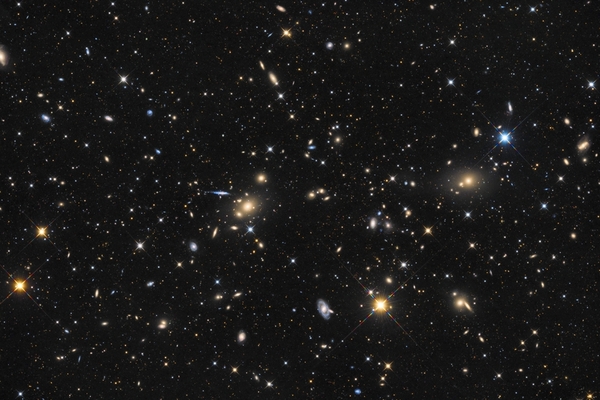
The depths of Leo
Bence Tóth
2022 May
Amateur astrophotographers who capture the wonders of the sky for their own pleasure mostly with their own telescopes, cannot see as far in the cosmos as the Hubble Space Telescope, nor as much as the new miracle of science, the James Webb Space Telescope will see soon. The farther we look into deep space, the earlier state of the universe we can see. Thus the distance that we can see is limited, as we cannot look beyond the Big Bang in time, which is 13.7 billion light-years in distance. So the real question is how old light can be seen with amateur equipment. By comparison, in the 13.7 billion-year-old universe the James Webb Space Telescope will be able to look back to 13.5 billion years.
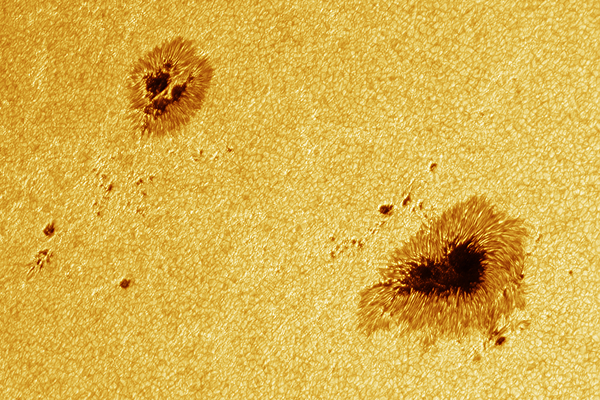
Sunspots
Dr. László Francsics
2022 April
Sunspots on the once again active sun. Sunspots marked as 2975 and 2976 are also the messengers of the intensifying solar activity. The image was taken by László Francsics from Fejér county, Hungary on March 22nd, with a 30 cm solar telescope that was specially designed and built for photographing the Sun.
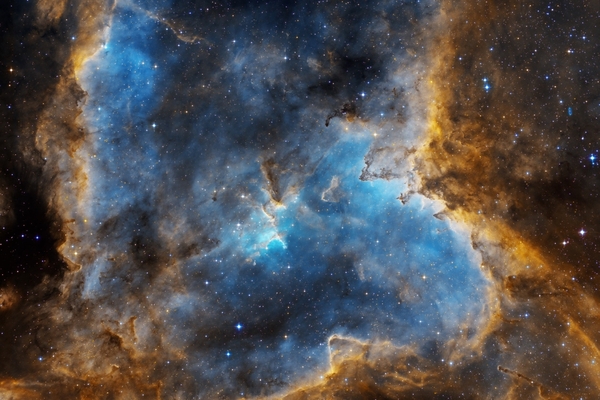
The Heart Nebula IC1805
Péter Feltóti
2022 March
The Heart Nebula is a so-called HII region approximately 7500 light-years away, a huge interstellar gas cloud composed mainly of hydrogen, in which young stars are born. The gas cloud is shaped by the stellar wind and ultraviolet radiation from massive hot stars in the nebula's star cluster, the Melotte 15, as this ultraviolet radiation induces light emission in interstellar clouds.
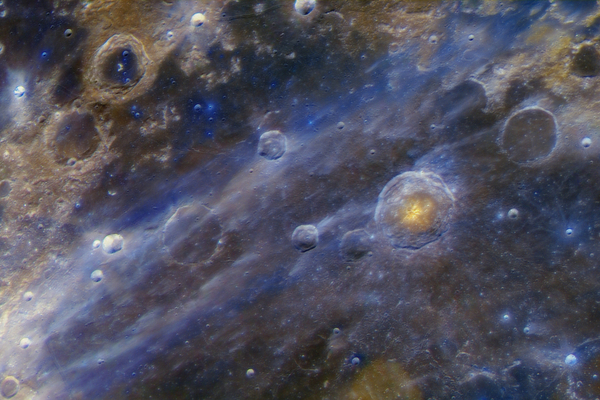
Bullialdus as Tycho debris slams through it - with 5 filters-2
Dr. László Francsics
2022 February
he Bullialdus is an utterly uninteresting crater on the Moon - at first glance. At the second, though, it may appear that it is located at a special location - below the most striking debris strip that precipitated from the Tycho crater 100 million years ago. If photographed in color, we can see that the crater edge has an astounding bluish color and an even more astonishing yellow central tip. The image was taken with I-R-G-B-U (infrared-red-green-blue-ultraviolet) filters in the spectral range of 800 nm to 320 nm, which is a little wider than the "visual" range perceptible to the naked eye.
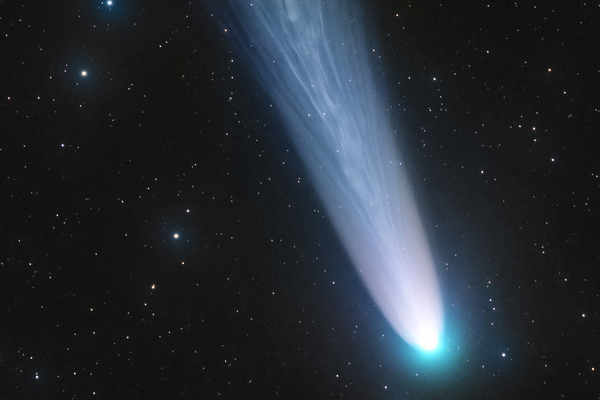
C/2021 A1 (Leonard) 27th December 2021
Lionel Majzik
2022 January
My image taken on the 25th of December was a kind of rehearsal for the 15 minutes of telescope time I managed to book on the 200 mm telescope of the Skygems Remote Observatories in Namibia. All signs showed that I will be finally able to gather enough raw material, but then the Namibian sky, which had been clear for several days, became cloudy at the beginning of my telescope time.
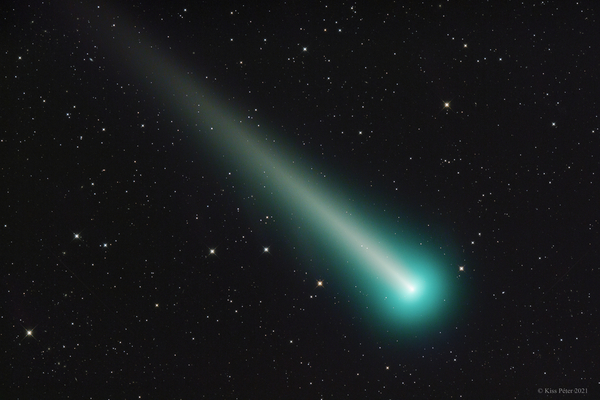
C/2021 A1 (Leonard)
Péter Kiss
2021 December
This photo is the first image taken with my self-built 250/1000 Newtonian telescope. I originally dedicated that night for testing, but I also prepared for the comet, because I knew there would be good visibility of the comet between 4:00 and 5:30 AM, additionally - under good skies. Unfortunately, clouds came and went, but image processing was not too problematic. An important lesson is that a 1-minute expo is already a lot. The raw images show movement of the comet,so half a minute would have been better. While there are no spectacular distant deep space objects in view, plenty of tiny background galaxies appear in the image. I thank Lionel Majzik for the inspiration by posting about the visibility of the comet.
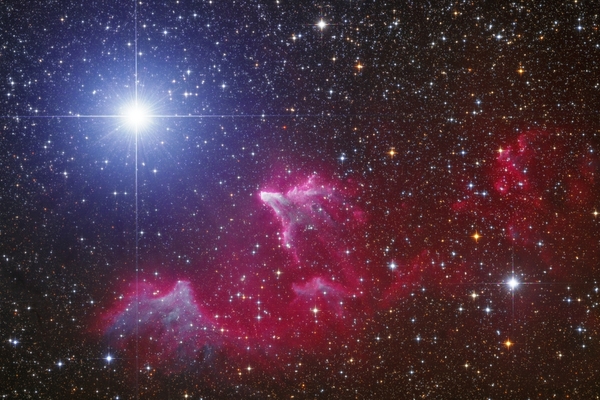
Gamma Cas and its friends
Bence Tóth
2021 November
The bluish light of Gamma Cassiopeiae is reflected by the nearby interstellar nebulae. These are located in the physical proximity of Gamma Cas, 3-4 light years away. Their comet-like shape is created by the star's ionizing ultraviolet radiation and high-energy stellar wind. The red color is caused by the emission of ionized hydrogen, and the bluish glow is a reflection of the light of Gamma Cas.
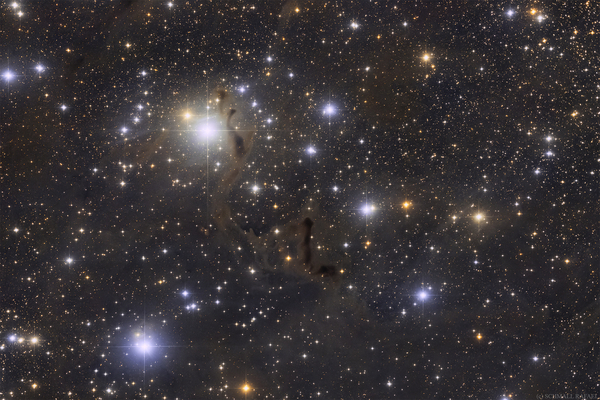
LDN 1355 - The Helping Hand Nebula
Rafael Schmall
2021 October
Astrophoto of the month, LDN 1355 - The Helping Hand Nebula captured by Rafael Schmall.
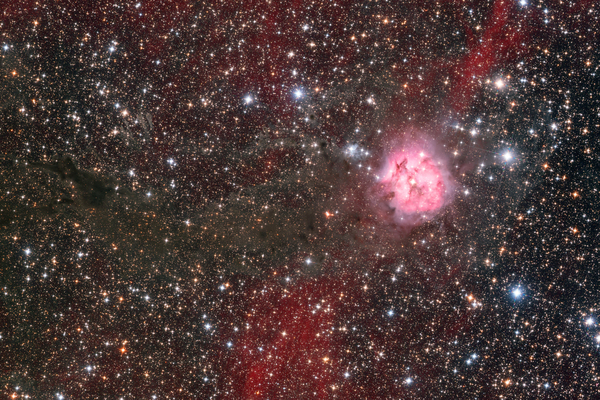
Cocoon Nebula - IC5146
Péter Feltóti
2021 September
The Cocoon Nebula is a relatively frequently photographed object, however, it is rarely among the photographed objects these days. Perhaps one of the reasons is that the “cocoon” with the bright and exciting details is relatively small in the field of view of the more common telescopes, and the capture of the faint dust clouds requires a lot of exposure time.
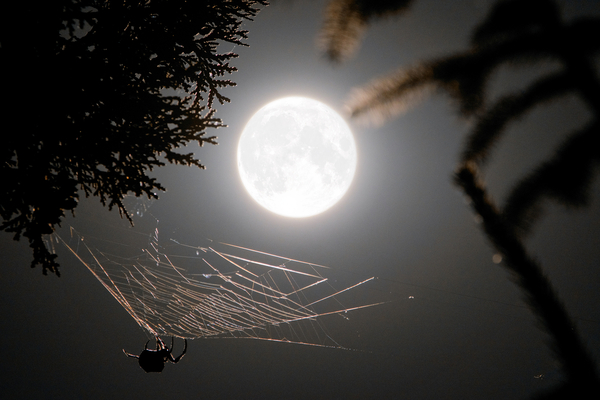
Trapped
Lionel Majzik
2021 August
No matter how strong the web, the spider couldn't catch our celestial companion (fortunately, It would have been awkward). For me on the other hand it was an opportunity to capture a really special view. To show the Moon and the environment on the same image It was necessary to mask together images with shorter and longer exposures.

Antares and its surroundings
Péter Kiss
2021 July
The Antares region, the Blue Horsehead Nebula, and countless spectacular objects whose names I don't even know are all in the field of view of the Samyang, the only issue is that it is almost impossible to capture them from Hungary. They are only visible for a short time and too close to the horizon. I like to push the boundaries, and when I took this picture, I was curious about the lowest possible location to take photos from the higher observation field in Törökoppány. Antares reaches its culmination at about 16 °. The tree branches just did not hang into the composition. Seeing the first pictures, the question arose - why am I wasting my time? Then, the higher the target crawled, the clearer the raw images became, and after half an hour, the blue reflection nebulae loomed.
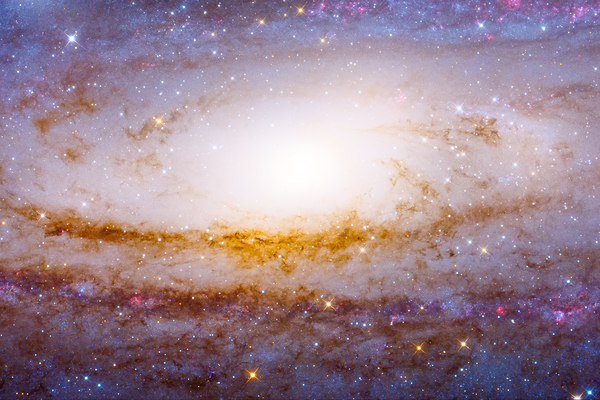
Andromeda proximity
Péter Feltóti
2021 June
The Andromeda Galaxy, also known as Messier 31 (M31), is the largest member of the Local Group, which also includes our own galaxy, the Milky Way. Looking at it from afar, we could observe the billion-year orbit of the two galaxies, as they are in gravitational relation to each other. The Triangulum Galaxy (Messier 33) is also involved in this game, and in a few billion years the three spiral galaxies and many companion galaxies will merge into one huge giant. But this event is so far in the future, that it certainly will not be observed by man from Earth. However, we are now in a privileged position, as we have an excellent view of the Andromeda Galaxy from the northern hemisphere. No wonder that every amateur astronomer and astrophotographer tries to capture this stunning object, even in the early stages of their career in astrophotography. Exciting details and characteristic shapes appear even at low magnification. Under good conditions we can even see the brightest part with the naked eye.
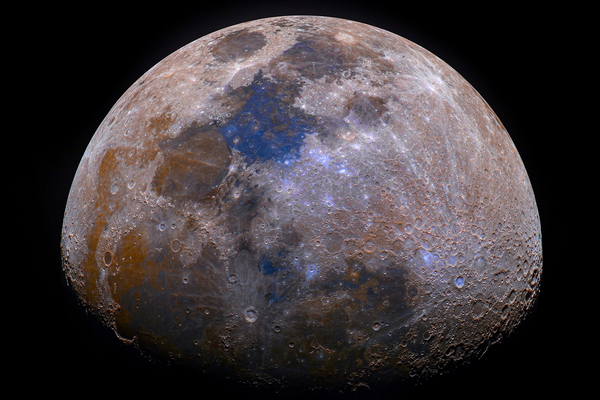
The Moon's colorful minerals
Tamás Dobrovodský
2021 May
I rethought my Moon composite image and reworked it. Thanks to the plethora of images, the fantastic sensor of the full frame Nikon Z6, and the apochromatic binoculars, I got an incredibly detailed image from which I was able to bring out the colors in detail as well.
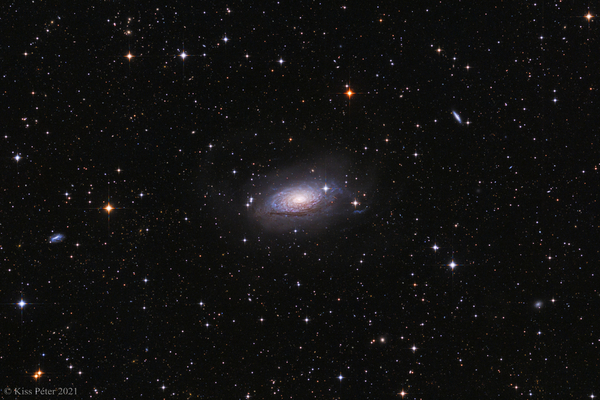
M63
Péter Kiss
2021 April
An image that took two springs to capture and a year to process. Okay, while it did not take me an entire year to process, I never managed to make myself pleased with the result. This was my first image, where the core of the galaxy is a lot brighter than the background, and I couldn’t make both look nice. But what are friends good for? It was Péter Feltóti who got me up from the downs, telling me how he solves this problem and in the end with some playing around I managed to figure out my own method. Thanks again! Messier 63 for me is one of the prettiest galaxies, although it doesn’t stick out of the field of view in this arrangement, but there is enough to look at in the background.

The Rosette Nebula
Péter Feltóti
2021 March
The Rosette Nebula has been my favourite object for a long time. I’ve already taken a traditional photo with my DSLR camera of it, that’s why I was curious, what can I achieve with a CCD camera and narrowband filters. I didn’t have an exact plan, I only knew, I didn’t want to take another ‘traditional’ Rosette photo. The seeing wasn’t unfortunately particularly good, rather worse than average, so the final image was less detailed than expected, but the proper integration time allowed me to experiment with the lights and the dynamics of the image. I couldn't reduce the stars without compromise either, but in the end I managed to achieve the visual effect that, I can say, is different than before, but is still authentic to the human eye
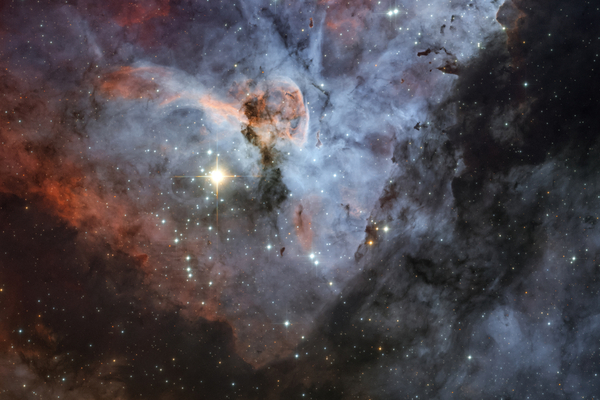
Eta Carinae
Lionel Majzik
2021 February
In late January and early February 2021 I collected enough data for an image with a robotic telescope in Chile. The star Eta Carinae and it’s neighbourhood had seemed an interesting and quickly imageble region, so I returned to it with a different concept. I got different colors than usual by mixing the RGB and the narrowband material, which I tried to present in a natural and restrained way.
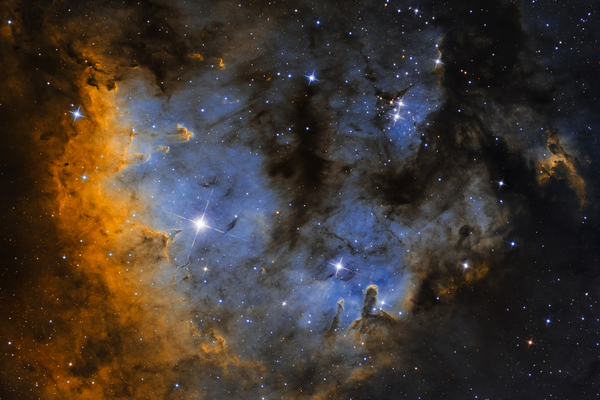
Cederblad 214 (NGC7822) - SHO
Bence Tóth
2021 January
I’ve wanted to capture this area for a long time because it promised to be very interesting with narrowband filters, like the ones Hubble Space Telescope uses. I’ve almost given it up this season, but in the evenings it was still high enough for a few hours, so in 5 nights, when there was a small break between the clouds, I finally gathered the necessary 26 hours of exposure time. Unfortunately, some of the raw pictures weren’t taken under a very good sky, but the characteristic columnar shapes of the nebulae began to emerge nicely, and the whole star-forming region appeared. The dust nebulae are particularly faint, so they required special attention, as there are many beautiful details hidden there, that can be shown.
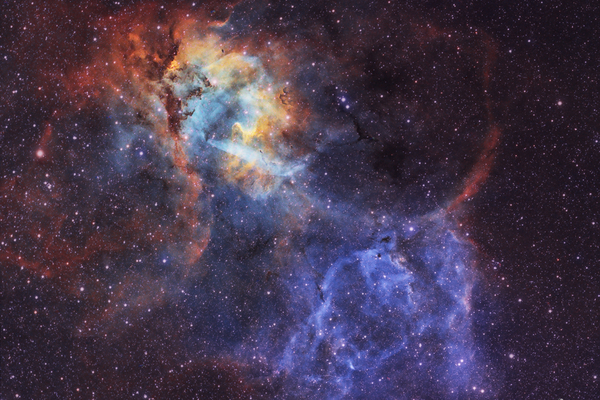
Sh2-132 Celestial Lion near Cepheus
László Bagi
2020 December
I tried to capture the emission nebula Sharpless 2-132 with excessively low surface brightness as detailed as possible. I exposed for 21 hours in total. I used narrowband filters to take the image. The nebula is intensively visible on the image, as opposed to the raw files in which the detail shows itself very faintly.
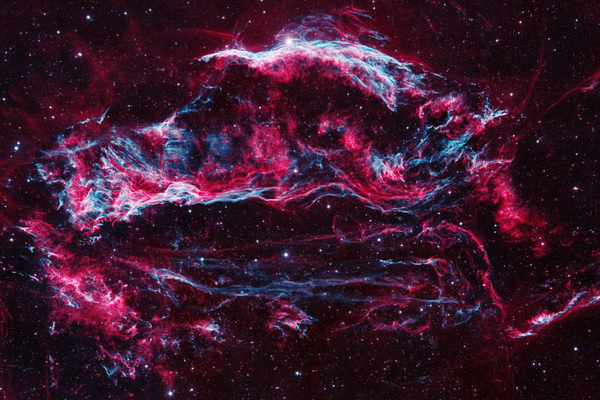
The Veil Nebula
Péter Feltóti
2020 November
This summer, I committed myself to capturing one of the most popular objects in the summer sky, a supernova remnant called the Veil Nebula as spectacularly as possible. The key to this was to put this relatively large object together from high-resolution mosaic panels. The result shown in the picture was cropped from six panels.(Péter Feltóti)
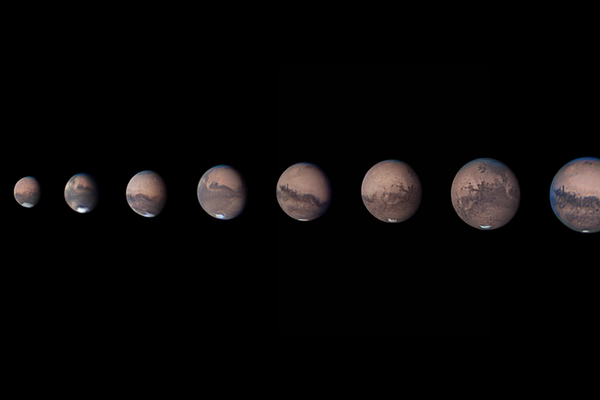
The 2020 Visibility of Mars
Zsolt Kereszty
2020 October
My series of Mars images were taken from the Corona Borealis Observatory in Győr, between the 4th of April and 8th of October 2020. The diameter of the planet increased from 6,5 arc-seconds to 22,6 arc-seconds over the past half a year. The seeing varied highly between 3/10 and 7-8/10, so the equal normalization of the images was the main task. For a long time, I have been planning on capturing a Mars opposition and visibility at the right altitude, the first half of which you can see right here. At the dawn and dusk edges of the planet, the ground level fogging and cloud formation is well recognizable, just like the spectacular Olympus Mons and its caldera. The series together, also showcases the martian seasonal change and the polar ice caps shrinking due to, it can also be studied. (Zsolt Kereszty)
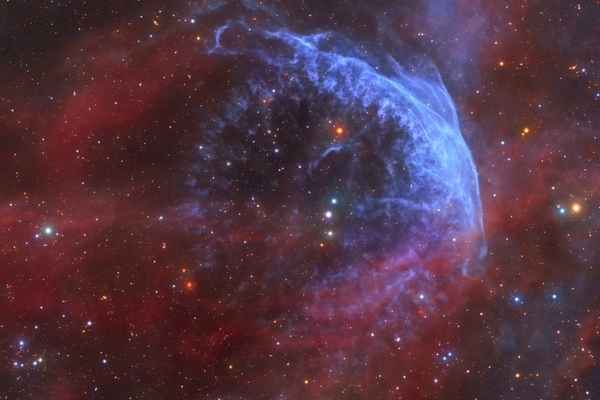
WR 134
Péter Csordás
2020 September
Wolf-Rayet 134 in the constellation Cygnus, not far from its famous relative NGC6888, the Crescent Nebula. The structure is similarly exciting, but all in all a lot fainter. It really prevails with an OIII filter, but in spite of the narrowband, it’s probably worth imaging under dark skies for the whole iris-like structure and the more diffuse parts to come out well. Processed as a HaOIIIRGB composite.
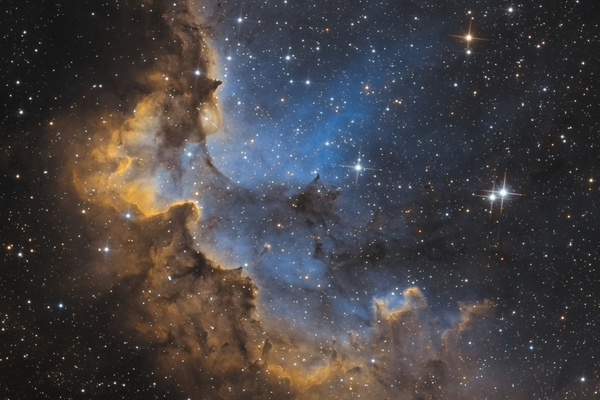
NGC7380 The Wizard Nebula (SHO)
Bence Tóth
2020 August
The raw data collected so slowly for the Iris Nebula that another narrowband project has been completed in the meantime. The processing was quite exhausting due to the small size, and massive star field even in narrowband but I hope it turned out acceptable.

C/2020 F3 (NEOWISE)
Péter Kiss
2020 July
I was lucky enough to be able to take this picture of the comet NEOWISE. Originally I didn’t even plan to deal with it but on monday some of us went to Belecska despite the uncertain weather and there I realized how beautiful it looks. I couldn’t miss it! After some improvisation I started the exposures and managed to collect about one hour of good-quality raw images. The processing was a struggle because the large field of view, the background stars barely moved, which resulted in trails in the integrated picture. The difficulty was handling these trails in a proper way so that the end result would be aesthetic.
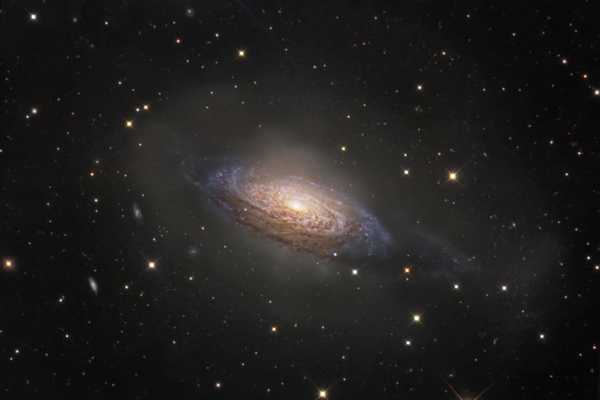
Bubble Galaxy, NGC3521
Zoltán Bach
2020 June
I turned my attention to the NGC3521 galaxy, previously unknown to me, due to a call. Being a relatively small object compared to the field of view of the usual astrophotography equipment, I thought about some other possibilities I have. I have already tried my 20 cm diameter, long focus, classic cassegrain telescope for photography, but the original F/12 brightness resulted in a very soft image. Then I came up with the idea to reduce the focus with a reducer, but I only had my Newton-optimized ASA 0.73 corrector at home to use. Looking back, it wasn’t a bad idea to choose this. I need to add, that, however much COVID-19 took away from being able to go outside, it gave back the same amount for image taking. I’ve never seen such clean, transparent skies from Vecsés as that set in with the disappearance of planes and other polluting dusts during the time of the pandemic.
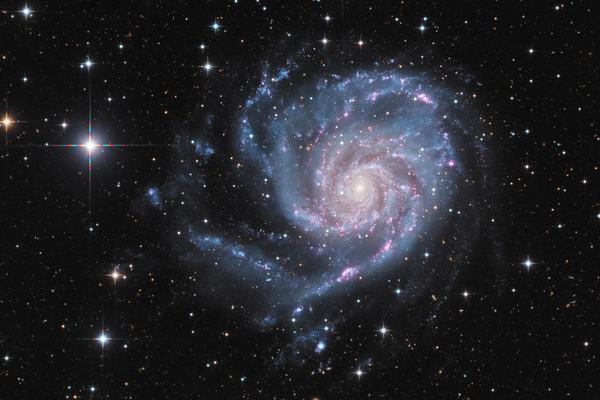
Messier 101
Péter Feltóti
2020 May
The M101 galaxy is a popular target for all astrophotographers from beginners to the most experienced. It is relatively bright, so it quickly gives you a sense of success but with a little more effort the faint parts will emerge from the background as well. Its detailed nucleus and the bright and extensive HII regions also provide a great amount of opportunities. Perhaps this is why we know a thousand faces of this galaxy, and each of us processes it differently. I’ve also made different versions but after a long philosophical discussion and several Pixinsight calibration I decided (with the help of Patrik Tarczi) to process it in a more muted, less popular way. Of course if you have a relatively good raw material at your disposal you can’t help bringing out the maximum of it. Yet now I decided to finalize a ‘quieter’ version.
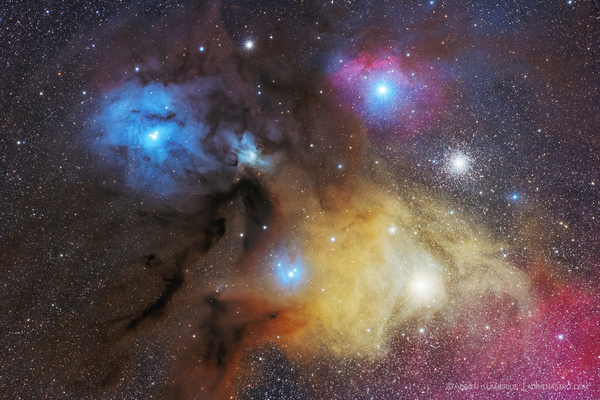
Rho Ophiuchi & Antares Region
Adrien Klamerius
2020 April
The Rho Ophiuchi region is an area rich in colors, for which I collected exposure time from Namibia back in 2018. Unfortunately there are a lot of stars here (too), so it was a struggle to try and bring out as many details as possible from the sea of stars, and setting the color balance was even harder. Next time I travel to the southern hemisphere I will definitely mosaic this beautiful area.

Southern craterfield of the waning Moon
János Varga
2020 March
The image of the Month in March 2020: An excessively sharp photo depicting a part of the Moon’s surface, the southern crater field.

Centre of The Milky Way
Rafael Schmall
2020 February
This is an image from Namibia, the concept behind it was simple... keep the rig working. No matter what, keep it working and imaging. Actually I’ve imaged the galactic core with every lens I had with me at the time. I have already uploaded the one with the 50mm, the 14mm and now this is the one with the 24mm on an APS-C sized sensor. These aren’t a perfect pair however, as the corner’s show a little coma.
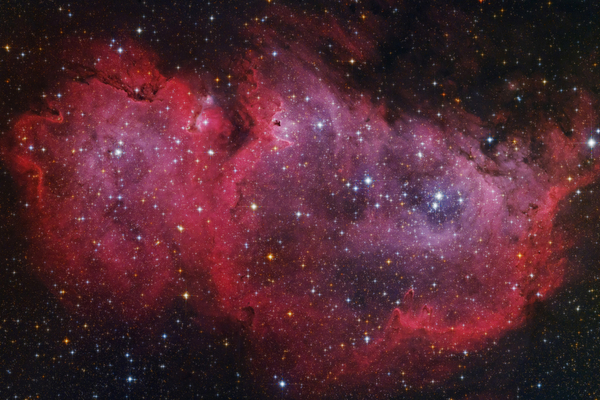
IC1848
Péter kiss
2020 January
Encouraged by the last year’s Andromeda mosaic, I decided to make a mosaic image in 2019 as well. The Soul Nebula was the right option because it could be made in two vertical panels, but I raised the stakes and used LRGB technique because of the dense star field. I had six clear nights, 2x2 nights for the UHC-filtered images from Pilis and 2x1 for the RGB images from Ágasvár. I could manage the star field better with the help of the UHC-layer but all in all reducing the stars was an immense job. In the end I’m satisfied with this image, but with all this RGB-mosaic, UHC-mosaic and LRGB-technique the post-processing was a long and tiring work. By the time I have finished, the size of the folder was 310 Gigabyte!
